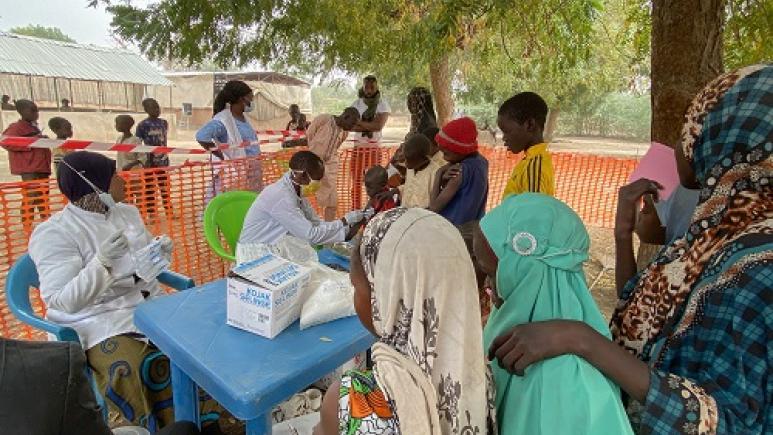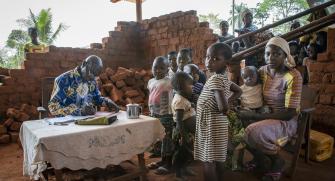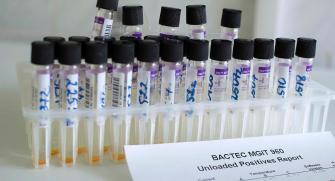Enhancing Measles Epidemic Preparedness in Niger: Anticipating Spatio-Temporal Risks for Effective Prevention and Response
Measles is the most contagious viral disease in humans and a leading cause of death in young children. To eradicate this disease, more than 98% of the population would need to be vaccinated, a threshold that remains far off in many countries. In Niger, for example, national vaccination coverage among young children is estimated at only 80% (2), a rate that is expected to be even lower in some districts.
Furthermore, according to WHO's data (3), ongoing vaccine shortages at the national and international level have reduced the reach of annual vaccination campaigns. Whereas 974,492 Nigerien children were vaccinated in 2021, 2022 saw only 771,172, a drop of 21%. Although this number rose to 881,109 last year, 2023 was still a major epidemic year for measles in Niger, with 48% of districts affected, 1,880 notified cases, and 7 reported deaths (4). The start of the 2024 season has carried with it a sharp increase in cases and ongoing deterioration in the humanitarian situation, leaving many concerned that this season may risk being even worse than the last.
Improving our understanding of spatio-temporal risks
Today, the measles vaccination strategy is based on a national immunization program for children aged between 9 and 18 months. It is supplemented by catch-up campaigns every 2-3 years targeting children aged 6 months to 5 years in areas where coverage is considered low and by reactive campaigns targeting children aged 6 months to 15 years in areas affected by epidemic outbreaks. Ideally, catch-up campaigns should take place in areas where the proportion of children most at risk is the highest, which depends on the area's existing vaccination coverage and epidemic history. In the absence of a census, however, administrative estimates of vaccination coverage are often unreliable. Moreover, epidemiological data suffer from frequent under-reporting and heterogeneous surveillance quality from one district to the next. This frailty in the epidemiological data complicates estimates of infection population immunity. It also renders epidemics harder to detect in real time and creates unique challenges for reactive campaigns, whose impact is often determined by timeliness.
"Currently, the effectiveness of measles control in Niger is severely compromised by the absence of risk-based allocation and strategy. Our project therefore aims to develop a combination of real-time anticipation, detection and prediction tools to facilitate decision-making by the Ministry of Public Health and MSF. These tools will be calibrated and evaluated both retrospectively using twenty years of surveillance and vaccination data and prospectively during the 2024 measles season. In this way, we hope to demonstrate the added value of these compared with those currently used," explains Ousmane Guindo, head of the Epicentre Research Center in Niger and co-leader of the study.
The study launched by Epicentre will develop three complementary tools for the different phases of the measles season:
- Before the season: A statistical model to classify Niger's 72 districts according to epidemic risk, i.e. low, medium and high, based on the number of cases reported over the last twenty years, vaccination activity/coverage, and any other identified risk factors.
- At the start of the season: An alert algorithm to rapidly, but confidently, identify districts showing signs of an emerging epidemic. Alerts will be updated weekly and integrated into Epicentre's Niger surveillance dashboard to help inform the operational decision making of MSF and the Ministry of Public Health.
- Throughout the season: A weekly prediction of short-term measles incidence at the district level, which will help identify trends and priority districts for resource allocation. Forecasts will be available on the dashboard alongside the alert system.
"These tools should not only enable us to better target catch-up campaigns, but also to identify emerging outbreaks earlier and thereby improve the timeliness of reactive vaccination. We also hope that these forecasts will help MSF to assess resource needs when planning interventions", explains Anton Camacho, head of Epicentre's Data Science team and co-leader of the study.
If successful, this study will provide an evidence base to improve vaccine distribution, reduce outbreak response times, and facilitate real-time planning, and inform prioritization in the fight against measles in Niger. Measles dynamics are challenging and each country needs to set its own priorities for outbreak response and vaccination strategy based on local epidemiology. Epicentre's Anticipation Measles project aims to provide an evidence based foundation for strategies tailored to the Nigerien context.
© johnny Bissakonou
-
Blake Alexandre, Djibo Ali, Guindo Ousmane and Bharti Nita, 2020. Investigating persistent measles dynamics in Niger and associations with rainfall J. R. Soc. Interface. http://doi.org/10.1098/rsif.2020.0480
-
https://www.gavi.org/fr/programmes-et-impact/espace-pays/afrique/niger
-
https://www.afro.who.int/sites/default/files/2023-05/Rapport%20annuel%202022%20WHO%20Niger%2004052023.pdf
-
https://www.unicef.org/media/152956/file/Niger-2023-COAR.pdf












